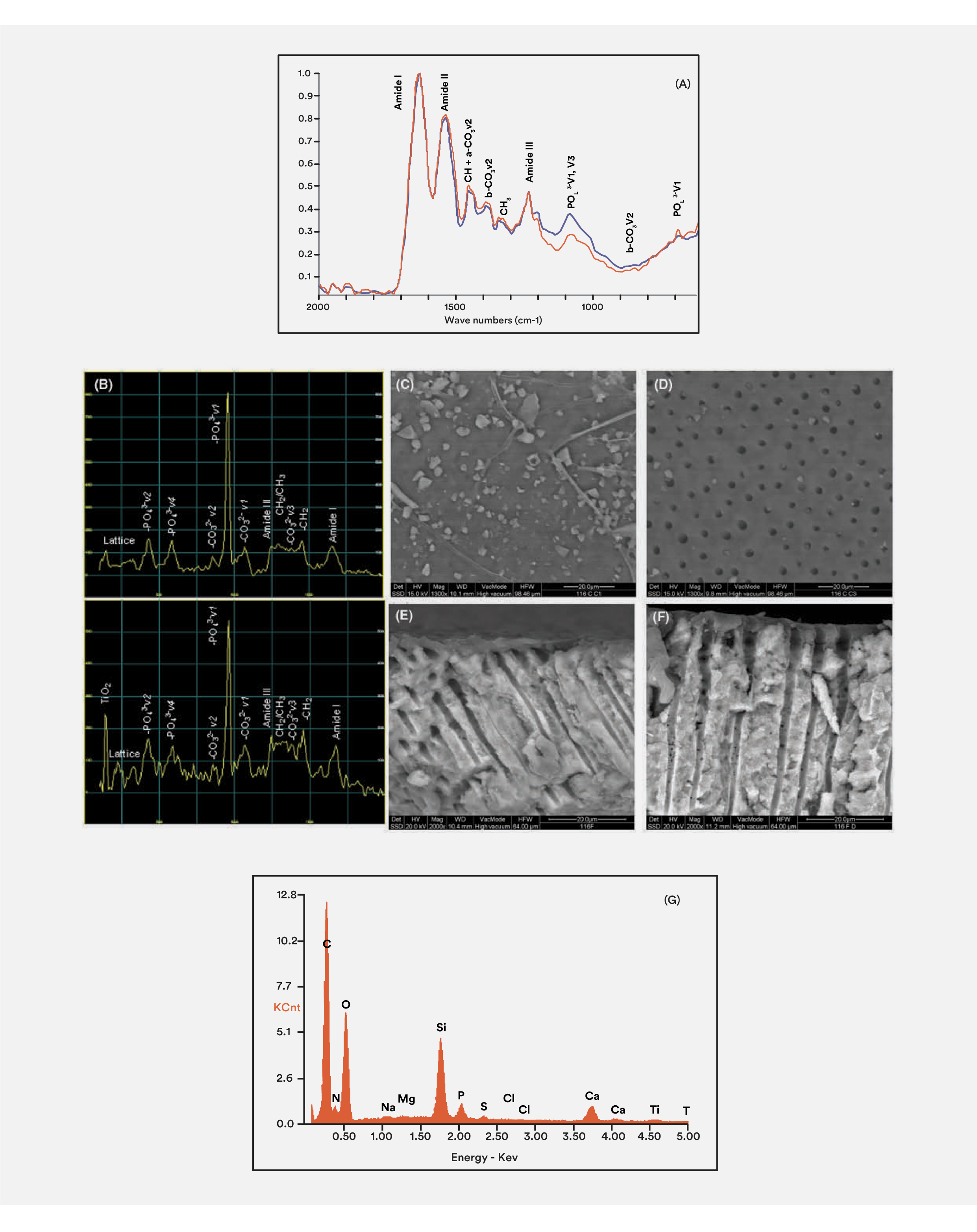A study was conducted to evaluate the effect of LISTERINE® Advance Defence Sensitive (LADS) on human dentine morphology and composition, in comparison to three commercially available dentine desensitizing products.
Human coronal dentine specimens were randomly assigned to be subjected to no treatment, acid etching, desensitizing agent and exposure to acidic challenge. After using the desensitizing treatments, dentine surfaces had open tubules.
The results of the study show that most tested products showed occlusion of dentinal tubules and mineral deposits, however, the greatest intratubular penetration of occluding particles, resisting the acidic challenge, was found in dentine treated with LADS. After the acidic challenge, the sub-surface occlusion features were least affected in specimens treated with LADS.

Figures: Dentine specimens treated with Sensodyne Repair and Protect toothpaste (SDRP) slurry. (A) Attenuated total reflectance Fourier transform infrared spectra after treatment (blue) and acidic challenge (red). Absorbance scale, 2000–600 cm-1 region; (B) Raman spectra after treatment (top) and acidic challenge (bottom). Linear intensity scale, 2000–0 cm-1 region; (C) backscattered electron (BE) image after treatment (1300×, bar 20 μm); (D) BE image after acidic challenge (1300×, bar 20 μm); (E) BE image of fractured specimen after treatment (2000×, bar 20 μm); (F) BE image of fractured specimen after acidic challenge (2000×, bar 20 μm); (G) energy-dispersive X-ray spectrum of treated dentine.
Click here to read the full paper.

